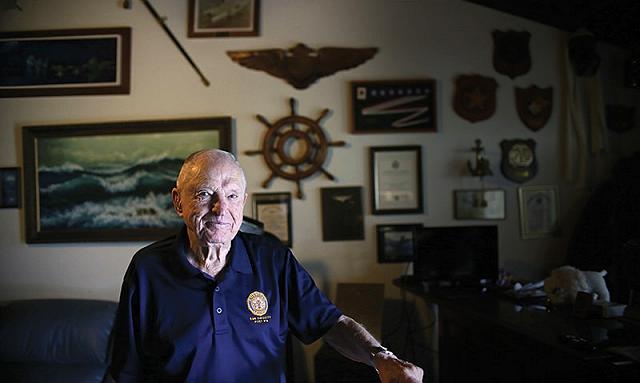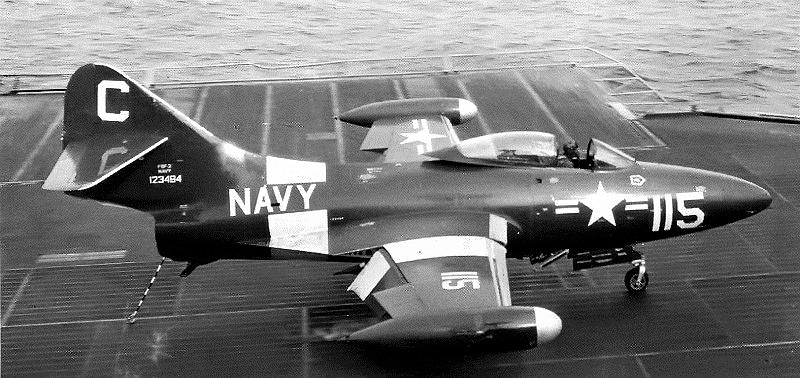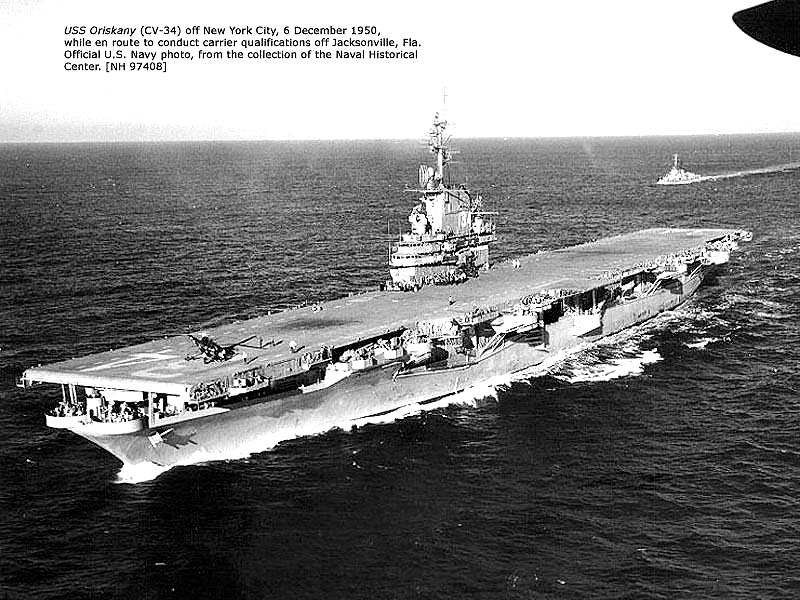

|
|
"Reprinted with permission of The American Legion Magazine, copyright November, 2017".
Silent Hero - The American Legion

Royce Williams
Silent Hero
He planned and led a successful aerial strike against the North Vietnamese, fiercely fought
But for all his accolades and the lives he touched, what stands out most in his august career
Williams grew up near the South Dakota-Minnesota border, spending his days fishing, playing
He wanted to follow in the footsteps of his father, a machine gunner in World War I. College
As early as age 11, Williams dreamed of a military career. That’s around the time he met
The Japanese attack on Pearl Harbor interrupted their courtship. Williams, 16, answered the Nov. 18, 1952
Williams stayed stateside, starting his Navy career in 1943 at boot camp in Corpus Christi, Texas,
During the Korean War, Williams served as a pilot for an F9F-5 Panther on board USS Oriskany.
For Lt. Williams and others in a carrier task force three aircraft carriers and about 20 Navy ships
Around noon, he flew out on patrol with three others: flight leader Lt. Claire Elwood, Lt. j.g. John
As the four Panthers climbed to 12,000 feet, the Combat Information Center radioed them to warn of
Moments later, a warning light signaled a problem with one of Elwood’s fuel pumps. He and I lost sight of them when they dropped out of the contrail level,” Williams says.
Four of them, still in formation, attacked Williams and his wingman. He pulled up and went after Now it was six on one.
I pursued the remaining three while the other three are coming from the other side, Williams says. They
Williams lined up, challenging the MiG and firing until it disappeared under his wings. The remaining
I’m just turning, I’m just countering what they’re doing and swivel-headed, he says. I had an opportunity;
Williams maneuvered into position to take out a fourth MiG “and had him smoking.
At that point, one of the MiGs scored a 37-mm hit in the right wing stub, penetrating the engine accessories
He headed back toward the task force, but was still being pursued. This guy just came around, and I
Williams considered parachuting but knew he would not survive the frigid waters. He aimed to land his
The plane caught the wire and came to a halt, concluding an unprecedented feat in aviation. Williams’ An unwinnable battle
During his 24-year Navy career, Top Gun graduate Ed Riley flew all sorts of planes, including MiG-15s.
Typically, if you’re in a one-versus-four, you’re trying to get away from the battle, Riley says, noting that
Not only was Williams outnumbered, Riley says, but he was battling superior planes. The MiGs had
Most dogfights last about five minutes. It was an eternity, Williams says of the 35-minute air battle.
He remained calm and focused during the intense exchange. While I was fighting, I don’t believe my
Waiting for his debriefing, Williams suddenly realized how tired and sweaty he was: I’d never worked
I’m a God-fearing person, he offers as an explanation of how he survived the dogfight virtually
His plane, however, bore the scars. A shipmate used a grease pencil to circle the perforations all 263
While Williams was calming his nerves in the ready room, tensions were escalating aboard the ship
Immediately, a phony report was sent to Washington, crediting Williams with a single kill and one
Briscoe, commander of Far East naval forces, told Williams he would be credited with at least three
Agents from NSA, which was formed Nov. 4, 1952, were secretly aboard task force member USS Scout’s honor
When Williams entered the flight in his pilot log book, his commanding officer stood by as he drew
But Williams never spoke of his secret as he continued his military career, serving in various capacities
Finally, sometime in the 1990s, the Soviets released the names of the four pilots Williams shot down.
Williams figured that since it happened so long ago, few people would care about it. He started by
Ohhhhh, Royce, he says, mimicking his late wife’s reaction of adulation and surprise.
Royce wasn’t much interested in sharing the story, but Cammie told their family and friends. It was 2002
How did the only American aviator to single-handedly shoot down four Soviet MiGs keep it a secret
It’s a puzzle, he shrugs. I don’t know. The Boy Scout in me, I guess.
Fighting for recognition
As more people hear about Williams’ heroics, support is growing for official recognition
Last summer, the South Korean government honored Williams with its Ambassador for Peace Medal.
It was wonderful, Williams says. The South Koreans were so kind. It was so well done.
Former Navy pilot Peter-Rolf Ohnstad was amazed to learn of Williams’ achievement.
When I first heard the story, I said, ‘I gotta meet this guy,’ Ohnstad remembers. This is crazy.
Ohnstad and Williams are members of American Legion Post 416 in Encinitas, Calif.
I became a member of Sons of The American Legion when I was 9 years old,” Williams says. I wore the
Ohnstad, his fellow Legionnaires and others are lobbying for Williams to be awarded the Medal of Honor.
Years ago, retired Rear Adm. Doniphan B. Shelton a combat veteran of World War II, Korea and Vietnam
There’s nothing wrong with the Silver Star that they gave him, believe me, but it’s not what he earned,
Shelton, who also served as a pilot, says he’s never heard of an air battle similar to that of Williams; neither
It’s a question of recognizing heroic action where heroic action should be recognized, Shelton says. In
Ohnstad, too, is passionate about setting the record straight for Williams so that future aviators will know
Rectifying the record and getting him the proper award that’s really what this is about, he says. This is a story
Williams, now 92, appreciates the support but is content to let others advocate on his behalf for a medal Henry Howard is deputy director of The American Legion’s Media and Communications Division.
By Henry Howard
for proper repatriations of POW/MIAs and helped train a generation of Navy pilots.
are 35 minutes that Williams was forbidden to reveal to anyone even his wife for 50 years.
hockey and getting into mischief. I was a lively kid, got in my share of trouble, he recalls.
wasn’t in the cards, so Williams worked hard to achieve the rank of Eagle Scout the first in
his community as a way to qualify for the Naval Academy so he could eventually become
a naval aviator.
Camilla Cammie Förde, on the first day of Sunday school at a Lutheran church. He still
remembers that day, though he says he didn’t know she would be the one until they were juniors
in high school. She sat across from me then. We started playing footsies or something.
call to service by joining the Minnesota State Guard. As soon as he turned 17, he signed up
for the naval aviation program and started his career after graduation.
and winning his wings of gold in Pensacola, Fla., in 1945. His service continued through the Korean
and Vietnam wars, in which he flew no fewer than 220 combat missions.
Everything changed the morning of Nov. 18, 1952.

F9F-2 Panther jet

Following carrier qualifications for Air Group 102, Oriskany departed San Diego 15 September 1952
to aid UN forces in Korea. She arrived Yokosuka 17 October and joined Fast Carrier Task Force 77
off the Korean Coast 31 October. Her aircraft struck hard with bombing and strafing attacks against
enemy supply lines and coordinated bombing missions with surface gun strikes along the coast.
in the Sea of Japan off Chonjin, North Korea, the weather wasn’t ideal. “It was really a nasty day,
heavy winds and snow, a big blizzard and low clouds, Williams remembers.
Middleton and Lt. j.g. Dave Rowlands. Williams was the most experienced of the pilots, charged
with protecting the task force by flying a combat air patrol. Earlier that day, he had flown a combat
strike against the Hoeryong industrial complex five miles from the North Korea-Soviet Union border.
inbound bogies: seven Soviet MiGs.
Middleton were ordered to hold back at 15,000 feet while Williams and his wingman climbed.
As they approached 26,000 feet, they located the MiGs, which were about 50 miles to the north
at about 50,000 feet. The MiGs broke into two groups and turned in opposite directions in an
attempt to pin the two Panthers.
The controller said he lost contact with them on the radar.That didn’t last long.
the last MiG within range, scoring a hit. For reasons still unclear, Rowlands followed the plane
as it spiraled toward the earth.
climbed, and I was going to go after the single he was the closest and just lost his wingman. He pulled
up and into the sun and probably 2,000 feet above me turned in, and he was right in the sun when I saw
the other two already turned and headed toward me. So I turned quickly to take them on.
MiGs positioned themselves to take on Williams one at a time.
a guy made a mistake. He overshot me and was level, and I came on around. I was close behind him.
I opened fire, and a lot of pieces started coming off his airplane, and I had to maneuver rather drastically
to avoid swallowing him. After that, I’m just back on the defense again.
The MiG didn’t maneuver but slowed and started a slight descent.
compartment, according to the official report that had been classified for half a century. Not only was
Williams still outnumbered, his plane had been significantly damaged. The cable to the rudder had been
severed and the hydraulic system was disabled. It was hard to fly. And Williams was out of ammunition.
can’t turn, he recalls. He’s maybe 400 feet behind me just firing away. But I would push over and rounds
would go over me.And I’d pull up, and they’d go under me until I got in the clouds, and I lost sight of him.
plane on Oriskany. As he fought for control, he used gravity and pilot skill to lower the landing gear and
tailhook, barreling toward the ship at nearly 200 mph.
heroics likely saved the lives of his fellow pilots and prevented an attack on the entire task force.
He says Williams’ experience was highly unusual the Navy rarely, if ever, practices scenarios of more
than four-versus-one.
pilots will take shots when possible. You’re not trying to prosecute the battle, because you know as soon
as you start to prosecute someone, you’re a grape for everybody else. So going one-versus-seven
you don’t want to be there.
more thrust, flew faster and were pretty advanced for their time, while the Panthers were fairly limited
in dogfights. Ultimately, Williams survived because of his superior airmanship and superior bravery,
throwing himself into a battle that was essentially unwinnable, Riley says.‘It was an eternity’
adrenaline had kicked in, says Williams, who received the Silver Star the following April. My breathing,
blood pressure and so forth all remained pretty normal for what I was doing.
so hard at flying an airplane. Somehow, he was uninjured except for minor cuts around his neck where
the gasket from his flight suit rubbed against his skin.
unscathed. And I had done a whole lot more training than the other guys up there.
of them. Some were minor while others were up to a foot wide. The plane was in such poor shape that
the crew pushed it overboard to its final resting place.
and in Washington, D.C. They’re yelling to our squadron intelligence officer, ‘Get in here Washington’s
on the line ... they want to know now!’ A wrong move could very well have propelled the United States
and the Soviet Union into World War III.
probable damage, while Middleton was linked with a kill and Rowlands a probable. Even though
Williams knew Rowlands never fired a shot, he was ordered to remain silent and meet with Senior
Adm. Robert Briscoe when Oriskany reached Yokosuka, Japan, a week later.
kills but that he must never speak of the incident. It wasn’t just the risk of dragging the Soviets into a
broader conflict; the United States didn’t want to reveal the existence of the brand-new National
Security Agency (NSA).
Helena. From there, the agents monitored the fight and documented at least three kills by Williams,
according to the agency’s report, which was declassified July 15, 2015.
one-and-a-half Soviet flags, indicating the official number of kills at the time. As the years went by
and the real story emerged, Williams modified the entry to reflect four Soviet flags.
at home and abroad before eventually hanging up his uniform.
Williams was then free to reveal his heroic actions, though he remained reticent.
telling Cammie.
when Williams finally spoke about it publicly during an event at the Pensacola Naval Museum.
for 50 years?
something that should have happened 65 years ago.
He was among the Korean War veterans who returned to a hero’s welcome, meeting President Moon
Jae-in, Prime Minister Lee Nak-yeon and senior military leaders.
Unbelievable. He should’ve been my hero when I went through flight training. I never even heard
of him. I thought, ‘He lives here? He’s alive? He’s in Escondido? I gotta meet this guy.’
gray uniform, and I don’t know how many times I saw ‘All Quiet on the Western Front’ in Legion meetings
and such. My dad was a post commander in South Dakota, and when we moved to Minnesota, it continued.
It was only natural when I got out (of the service) to become a member.
At the 99th National Convention in Reno, Nev., the Legion’s National Executive Committee approved
Resolution 70, which calls for the Legion to petition Congress and the Department of Defense to so
recognize Williams.
became interested in Williams’ story. He secured endorsements from two four-star admirals,
Thomas B. Hayward and Ronald J. Hays, before asking U.S. Rep. Duncan Hunter, R-Calif., to review the
case.
Shelton says, referring to Williams’ 35-minute dogfight nearly 65 years ago.
have naval historians. That’s part of what led Shelton to research the dogfight and push Congress to award
Williams the Medal of Honor. In Shelton’s San Diego home, a long table overflows with what looks like a
battle plan maps, sketches and other material related to Williams’ actions.
World War II, there was a strong clamor for heroes to be recognized all the time. That was not true in Korea.
Nobody gave a s**t about heroes in Korea. They kind of came back a bit in Vietnam, but not really. There’s
never been anything to supersede World War II from a standpoint of public support and wanting to recognize
people for what they did. This remarkable aerial engagement of Royce Williams is unsurpassed before in
Korea, Vietnam or since then.
what transpired Nov. 18, 1952.
that needs to be told.It sat there for 50 years. Nobody ever talked about Royce Williams. Nobody knew who
he was. We need to make sure that Top Gun aviators know, the public knows, everybody knows.
upgrade. Wait and see ... wait and see.